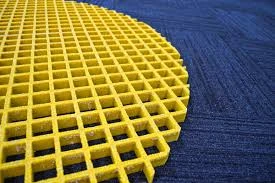loading...
- No. 9, Xingyuan South Street, Dongwaihuan Road, Zaoqiang County, Hengshui, Hebei, China
- admin@zjcomposites.com
- +86 15097380338
- Welcome to visit our website!
water treatment for home
Home Water Treatment Ensuring Safe and Clean Drinking Water
Water is an essential resource for life, and having access to clean and safe drinking water is crucial for health and well-being. In many regions, municipal water systems provide treated water that is considered safe to consume. However, there are instances where contaminants may still exist, and individuals may choose to implement additional water treatment methods at home. This article explores various home water treatment options, their benefits, and considerations to ensure that families have access to pure drinking water.
Understanding Water Contaminants
Before diving into treatment methods, it’s important to understand what can contaminate water. Common contaminants include
- Microorganisms Bacteria, viruses, and protozoa can enter water supplies from agricultural runoff, sewage, and animal waste. - Chemicals Pesticides, fertilizers, heavy metals, and industrial chemicals can leach into groundwater and surface water. - Sediments Dirt and debris can sometimes find their way into water supplies, leading to cloudiness and unpleasant tastes. - Taste and Odor Compounds Chlorine, sulfur, or organic matter can affect the taste and smell of water.
Understanding these contaminants can help homeowners make informed decisions about which treatment methods to utilize
.Types of Home Water Treatment Systems
1. Activated Carbon Filters Activated carbon filters are among the most common home water treatment options. They are effective in removing chlorine, sediment, volatile organic compounds (VOCs), and improve the taste and odor of water. These filters can be installed as faucet attachments, under-sink systems, or as part of a whole-house system. It’s important to replace the carbon regularly to maintain effectiveness.
2. Reverse Osmosis Systems Reverse osmosis (RO) systems use a semi-permeable membrane to remove a wide range of contaminants, including heavy metals, salts, and microorganisms. These systems are typically installed under the sink and provide high-quality pure water. However, they can be more expensive and may waste some water during the filtration process.
water treatment for home

3. Ultraviolet (UV) Purification UV systems use ultraviolet light to kill or inactivate microorganisms in water. This method is highly effective for eliminating bacteria and viruses without adding chemicals. However, UV systems do not remove other contaminants such as chemical pollutants or sediments, so they are often used in conjunction with other treatment methods.
4. Water Softening Systems Hard water, which contains high levels of calcium and magnesium, can lead to scale buildup in pipes and appliances. Water softeners can remove these minerals and prevent such issues, making them a popular choice among homeowners dealing with hard water. However, softened water is not recommended for drinking without further filtration.
5. Pitcher Filters For those looking for a simple and cost-effective solution, pitcher filters can be a suitable option. These devices utilize activated carbon to filter water and improve its taste and odor. While they are not as comprehensive as other systems, they can serve as a quick remedy for minor quality issues.
Factors to Consider
Before investing in a home water treatment system, homeowners should assess several factors
- Water Quality Testing Conducting a water quality test can identify specific contaminants present in your water supply. This information is essential for selecting the appropriate treatment system. - Cost and Maintenance Different systems come with varying installation costs, maintenance requirements, and filter replacement needs. Homeowners should consider their budgets and willingness to maintain the system. - Flow Rate The flow rate of a system indicates how much water can be treated in a given time. Larger households may require systems that can handle higher demand. - Certification Look for treatment systems that are certified by organizations such as the NSF International or the Water Quality Association. Certification ensures that products meet safety and performance standards.
Conclusion
With the increasing concern over water quality, home water treatment systems have become an essential consideration for many families. Whether through activated carbon filters, reverse osmosis systems, or UV purification, ensuring access to clean drinking water is vital for health. By understanding contaminants, exploring treatment options, and considering individual needs, homeowners can make informed decisions that contribute to safer and healthier living environments. Investing in a reliable water treatment system not only enhances water quality but also promotes overall well-being.
-
The Rise of FRP Profiles: Strong, Lightweight, and Built to LastNewsJul.14,2025
-
SMC Panel Tanks: A Modern Water Storage Solution for All EnvironmentsNewsJul.14,2025
-
GRP Grating: A Modern Solution for Safe and Durable Access SystemsNewsJul.14,2025
-
Galvanized Steel Water Tanks: Durable, Reliable, and Ready for UseNewsJul.14,2025
-
FRP Mini Mesh Grating: The Safer, Smarter Flooring SolutionNewsJul.14,2025
-
Exploring FRP Vessels: Durable Solutions for Modern Fluid HandlingNewsJul.14,2025
-
GRP Structures: The Future of Lightweight, High-Performance EngineeringNewsJun.20,2025
